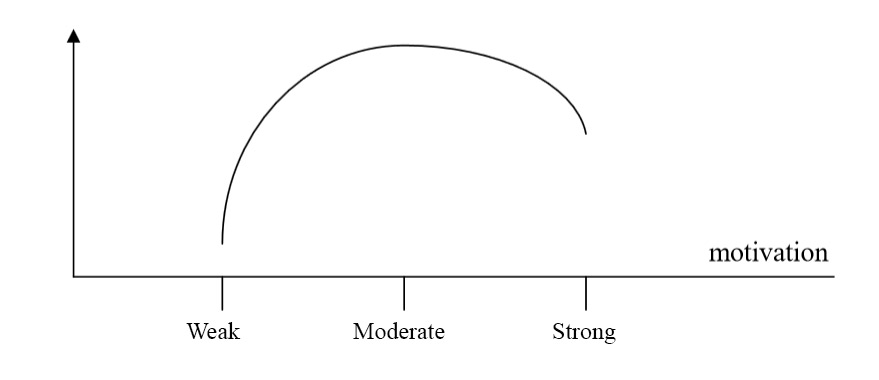Experiments in psychology reveals different factors that can influence the efficiency of memory.
The conclusions of these experiences reported here were taught by Hervé Devos, professor of occupational psychology, at the “Conservatoire National des Arts et Métiers de Lille”, school year 1997-1998.
Effects related to the pedagogic material
Effect of repetition
The more an event is repeated, the better it is memorized. Redundancy is therefore useful, but with different formulations, to increase decontextualization.
Law of distribution (Jost’s law)
Remembering is better when alternating breaks between learning (distributed learning) and when breaks are not too long.
Global learning and partial learning
This corresponds to the distinction between mass and distributed learning but adding an organizational dimension : it is the way we’re going to cut the material. Partial learning consists of cutting the material into small parts accessible to the target. The different parts are learned separately, one after the other. Global learning is about remembering the material entirely. The effectiveness of the division depends on the level of expertise of the students in relation to the complexity of the content and the form: the less the subject is familiar with the discipline or the more complex the material, the more the partial learning is effective. Global learning is more effective for the expert because he / she perceives the logic that emerges from the overall text and selects the interesting details.
Visual vs verbal
People do not have the same facilities to remember two presentations of the same concept. Some people retain better an imaged material (drawings, curves, diagrams …) and others a verbal material. Both types of presentation are therefore interesting to use simultaneously to ensure understanding by all learners.
Recency and primacy
Experiences show that, of a list of words, we remember better the beginning and the end.
In long-term memory, ie when the reminder is delayed for a few days, only the beginning of the message is remembered. Advertisers are well aware of this phenomenon, so the most important information is often presented at the beginning and sometimes at the end of the advertisement, and the advert is preferably at the beginning or at the end of an advertising sequence. On a pedagogical level, the effects of recency and primacy demonstrate the usefulness of an introduction and a conclusion containing the most important information.
Effect of familiarity
The more familiar a word is, the easier it is to memorize, thanks to pre-existing structures in memory. An educational application is the presentation of familiar examples to illustrate a complex course.
Effect of significance
The more significant a material is in relation to the concrete experience of the individual, the better it will be remembered. An educational application is to give practical exercises before introducing the theory.
Interference effect
Proactive interference (not retaining new information) occurs when the new information belongs to the same semantic field as the previous ones. It is therefore useful in the organization of pupils’ schedules not to follow very similar subjects (for example an Italian lesson after a Spanish course).
Categorization effect
The more a material is composed of categorizable units, the easier it is to remember. That’s why it’s best to present the presentation plan before. This effect is similar to that of partial learning, but emphasizes the division by semantic categories.
Effect of complexity
The memory span is 7 plus or minus 2 elements. It seems that this discovery by Miller (1956) results rather from the time needed to read the list of items. An educational application consists in grouping the information into categories which time required for their utterance corresponds to the period of time implicitly discovered by Miller. If the number of categories is too high, they can in turn be grouped into super-categories (each containing a memorable number of categories) respecting a memorable speech time. Thus the information is structured in a hierarchy instantly accessible in memory.
Effect of distinction
To be perceived, a stimulus must be well distinct from its environment. In pedagogy, this means that the parasitic effect of a background noise caused by chatting in an amphitheater, for example, can be neutralized by creating a contrast between the sound pitch of the teacher and that of the pupils.
Effect of time
The more time passes and the more the memory fades, but the ease of learning in the same semantic domain increases.
We distinguish in order of decreasing retention:
Recognition
The subject is presented with information and asked to judge the information he has already encountered. MCQs operate according to this paradigm.
Reconstruction
The information presented to the subject is represented in the disorder, the subject must return the material in the initial order.
Free recall
The subject recalls the information presented to him in the order that suits him.
Ordered recall
The subject recalls the information in the order presented to him. It is a cross between the reconstruction paradigm and the free recall paradigm (the requirement is twofold).
Forgetting is faster for recall and then for reconstruction. The recognition is almost stable over time.
Effects related to the subject
Effect of motivation
A minimum of motivation is required to memorize. But an excess of motivation causes stress and alter memorization.

It is therefore important to know how to manage stress in a situation of exam. To help an anxious person, several solutions are possible: cognitivo-behavioral therapies propose the “systematic desensitization”, that is to face the situation on more and more stressful stages until the final stressfull situation. Each step is accompanied by relaxation exercises. This progressive scenario can be illustrated in school by mock exams. Another form of therapy is to totally immerse the subject in the anxiety situation. The risk is then a permanent flight from the subject. Another solution to overcome neurovegetative reactions is to practice a sport.
Effect of sleep
The effect of sleep corresponds on a larger scale to the effect of breaks between learning (law of distribution of the exercise). Montagner’s Studies show that a child’s performance rate is correlated with the number of hours of sleep.
Effect of drugs
In low doses, alcohol, cannabis, caffeine,… can reduce anxiety and therefore increase alertness. But this effect is more related to psychic autosuggestion than to the real chemical effects of the substances, for example by associating the memory of consumption with a pause, the pause being a pretext for the first shots, then, by associative learning, the substance becomes self-sufficient. But this psychological effect is minimal. On the other hand, an excess of these substances causes a clear alteration of the memory. It is often in search for the initial effect that people end up in excess, thus producing exactly the opposite effect than the desired one.
Effect of brain damage
The effects produced by various types of brain damage show that we do not have a single memory. The aphasia of Wernicke for example (semantic confusions in the verbal discourse) is systematically accompanied by a lesion of the left temporal lobe, we can deduce that this cerebral zone manages the connections between the phonological characteristics and the semantic content of the language.
